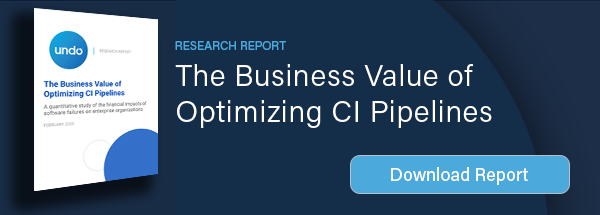Resources
3 Key Findings from our CI Research Report
 What is the real cost of persistent failures in Continuous Integration (CI) pipelines? That is what a recent survey conducted as part of a Cambridge Judge Business School MBA project sought to answer.
What is the real cost of persistent failures in Continuous Integration (CI) pipelines? That is what a recent survey conducted as part of a Cambridge Judge Business School MBA project sought to answer.
To do so, the research team leveraged a two-fold approach to attain quantifiable data. They conducted extensive secondary research across industry databases and analyst firms; and deployed a field survey to gather primary research data.
The research concluded three key findings:
- Adoption of CI best practices is on the rise. 88% of enterprise software companies say they have adopted CI practices, compared to 70% in 2015
- Reproducing software failures is impeding delivery speed. 41% of respondents say getting the bug to reproduce is the biggest barrier to finding and fixing bugs faster; and 56% say they could release software 1-2 days faster if reproducing failures wasn’t an issue
- Failing tests cost the enterprise software market £61Bn. This equals 620 million developer hours a year wasted on debugging software failures
Every company is a software company, the ability for software engineering teams to deliver high quality software at speed is the difference between companies that gain a competitive edge versus those that fall behind. While the adoption of CI is on the rise, software failures are inevitable.
Despite the best efforts of software engineering teams, there are too many situational factors outside of their direct control that can cause the software to fail. The time spent finding, and fixing, those failures is costing enterprise organizations billions annually.
If you are interested in learning more about the business value of optimizing CI pipelines, or to explore the data in more detail, we encourage you to download the full research report.

